Philippine Heritage Churches After the Bohol Earthquake
More than the usual fear and anxiety that is caused when a strong earthquake hits the Philippines, the recent one that hit Tagbilaran, Bohol resulted to considerable regret because of the damage brought upon on centuries-old heritage churches. The 7.2 magnitude earthquake that occurred at about 8 am today caused severe damage to several Philippine heritage churches including the Loboc Church, Baclayon Church, and the Loon Church, among others. These churches have been important travel stops for many visitors and form part of the attraction of Bohol itself.
The earthquake also affected Cebu which likewise resulted to damage of the oldest Roman Catholic Church in the Philippines.
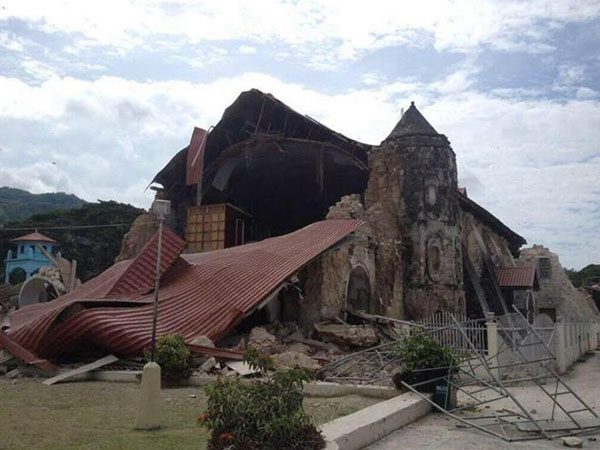
Loboc Church after the earthquake | Image Source: newsinfo.inquirer.n
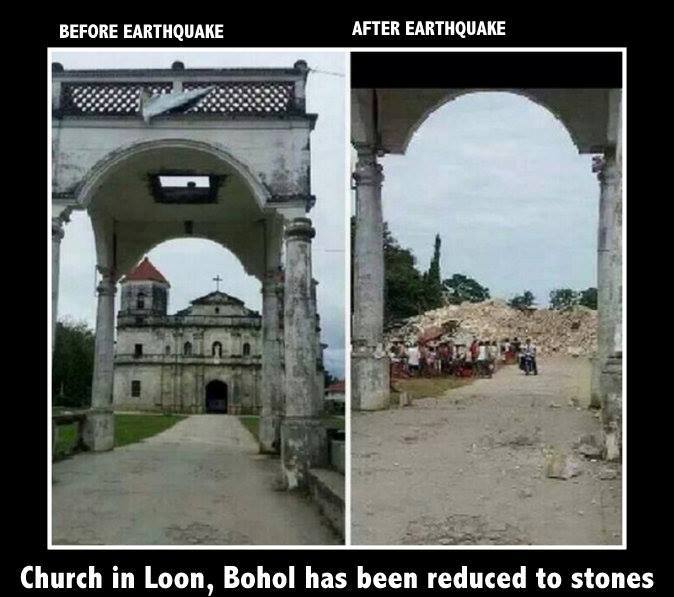
Loon Church reduced to stones | Image Source: Facebook
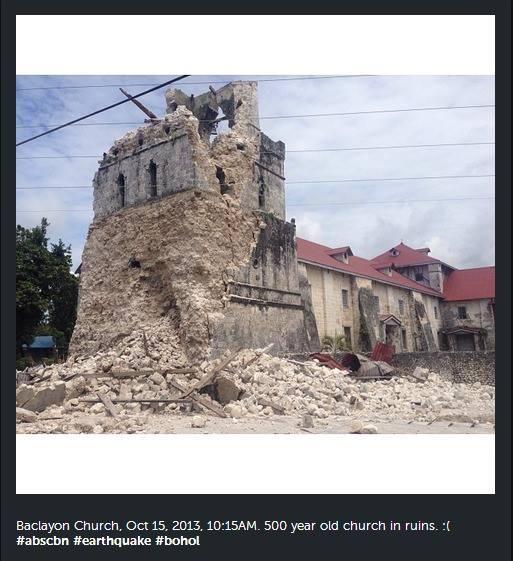
Baclayon Church in ruins | Image Source: ph.news.yahoo.com
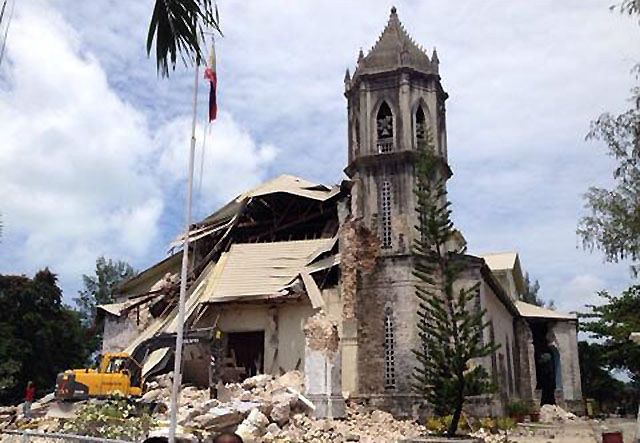
Dauis Church damage | Image Source: gmanetwork.com
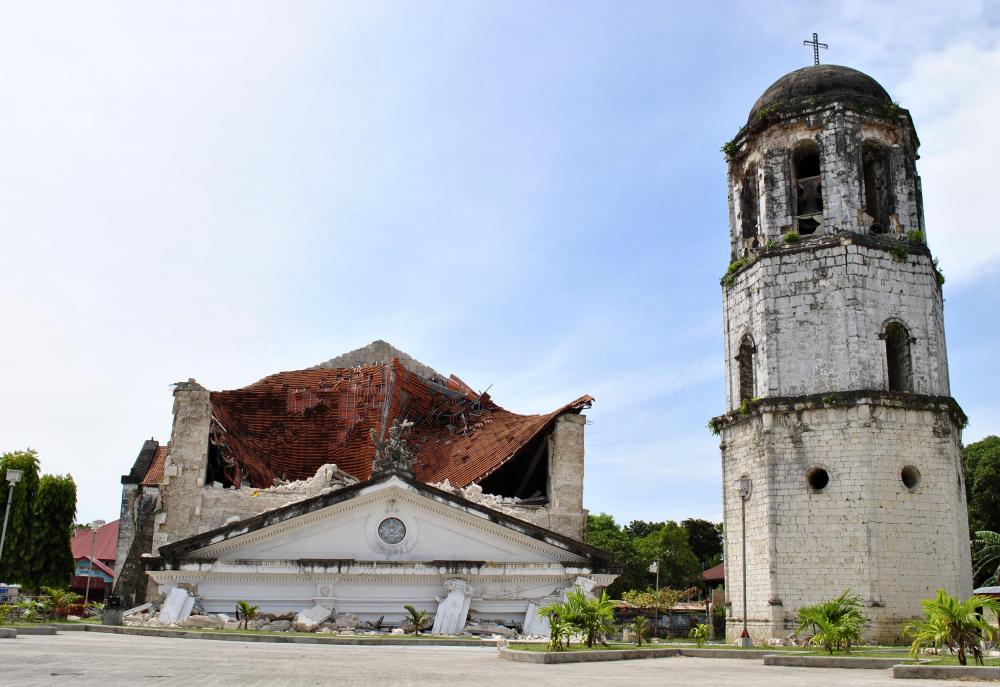
Loay Church damage | Image Source: Reuters
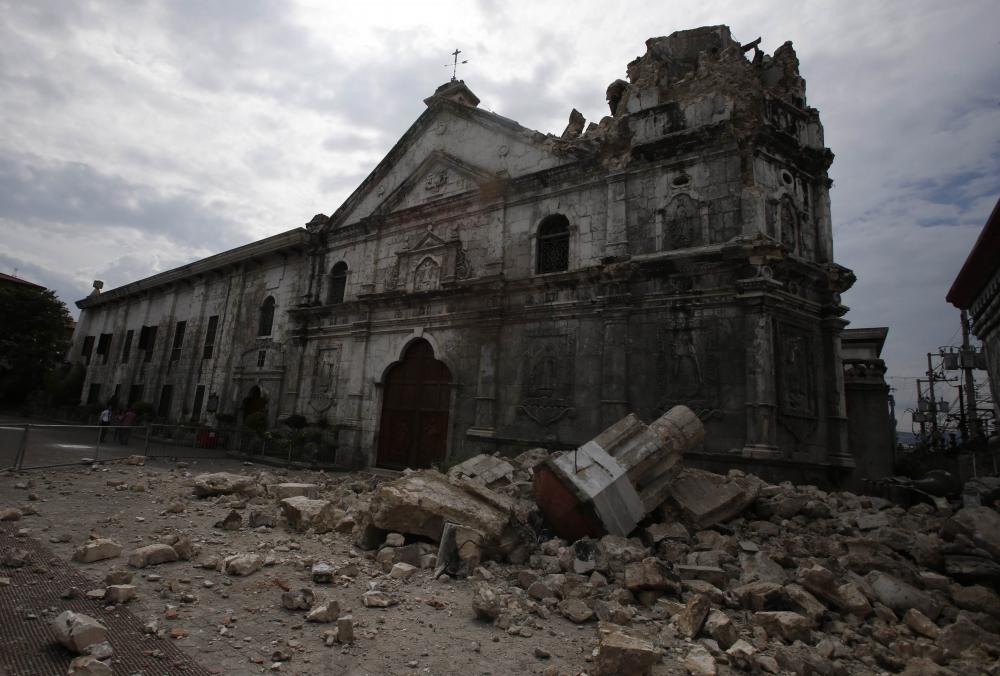
Sto. Nino Church Cebu damage | Image Source: Reuters
It is such a heartbreak to see heritage structures damaged this extensively. Although it appears that casualty count is relatively low which is something to be very thankful for, the destruction of these historical sites is really quite a big blow to goals that seek to preserve the Philippines’ rich cultural heritage. The images above are some of the early proof of destruction of these Philippine Heritage Churches.
Let us take a look at the former grandeur of these churches:
Loboc Church
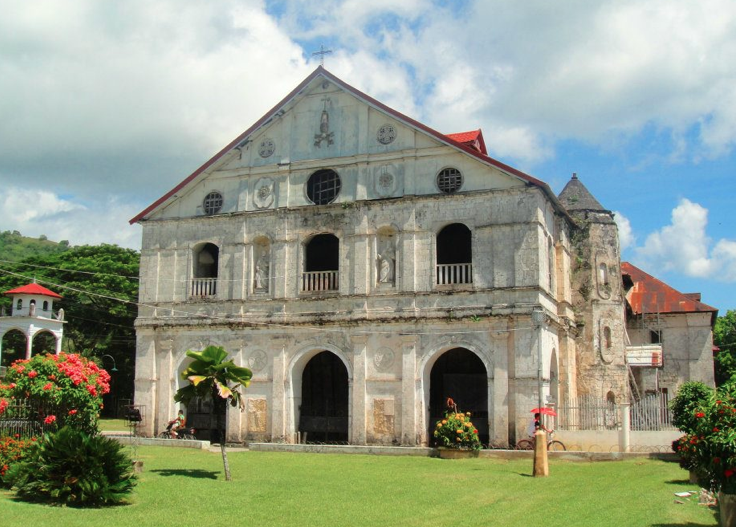
Loboc Church
Loboc Church goes by the official name of The Church of San Pedro. It was originally built in 1602 and was rebuilt in 1638 when the original structure was reduced to ashes, making it the second oldest church in Bohol. It boasts of remarkable paintings on the ceiling. There is a three-story convent attached to it which houses the Museo de Loboc. The church is a mix of Neoclassical and Baroque styling with Latin american Colonial Art.
Loon Church
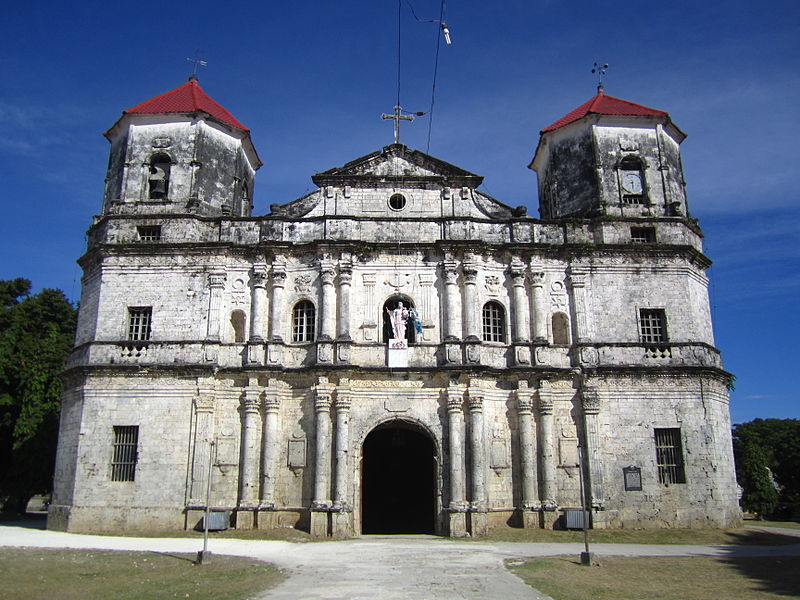
Loon Church
Loon Church is also known as The Church of Our Lady of Light. It is the biggest church in Bohol. It was built in 1853 and is likewise of Neoclassical and Baroque architectural styling.
Baclayon Church
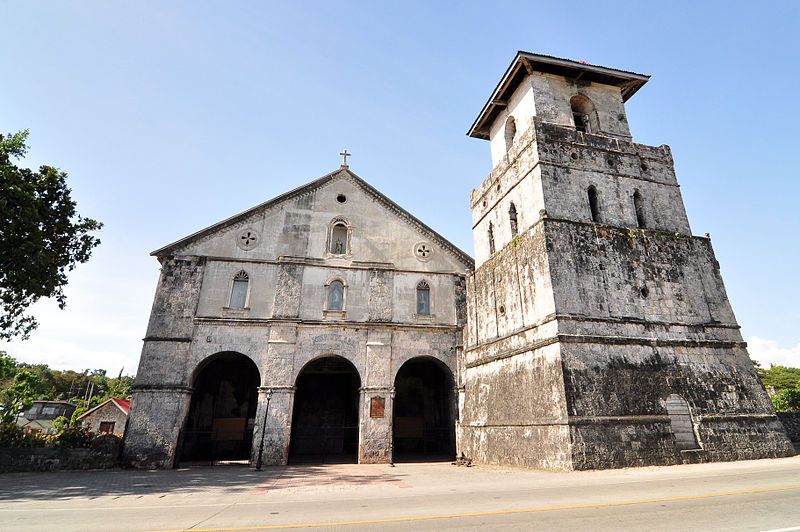
Baclayon Church
Baclayon Church’s official name is The Church of Our Lady of the Immaculate Conception. It is considered one of the oldest and best preserved churches in the region and is believed to have been completed in 1727. Its architectural styling is Classical.
Dauis Church
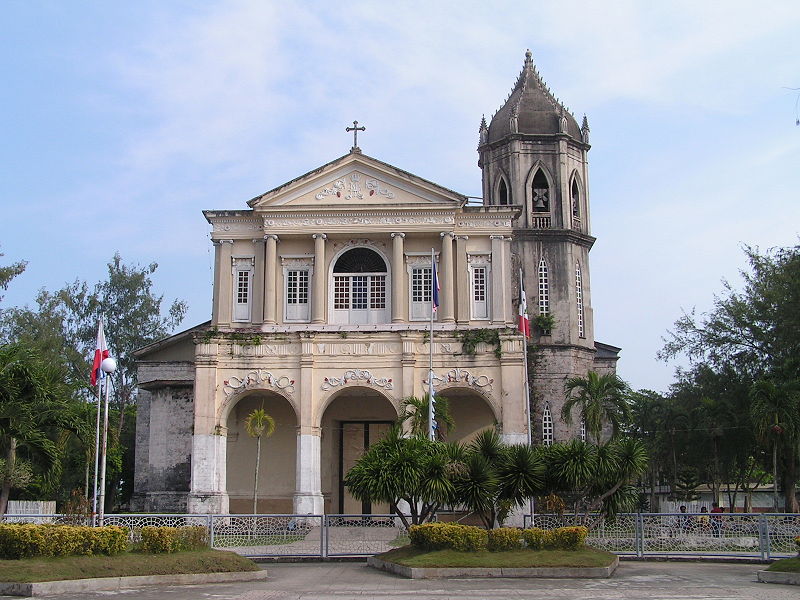
Dauis Church
Dauis Church is the Church of Our Lady of the Assumption. The structure is influenced by Byzantine and Romanesque architecture. Its ceiling boasts of impressive frescoes painted in 1916.
Loay Church
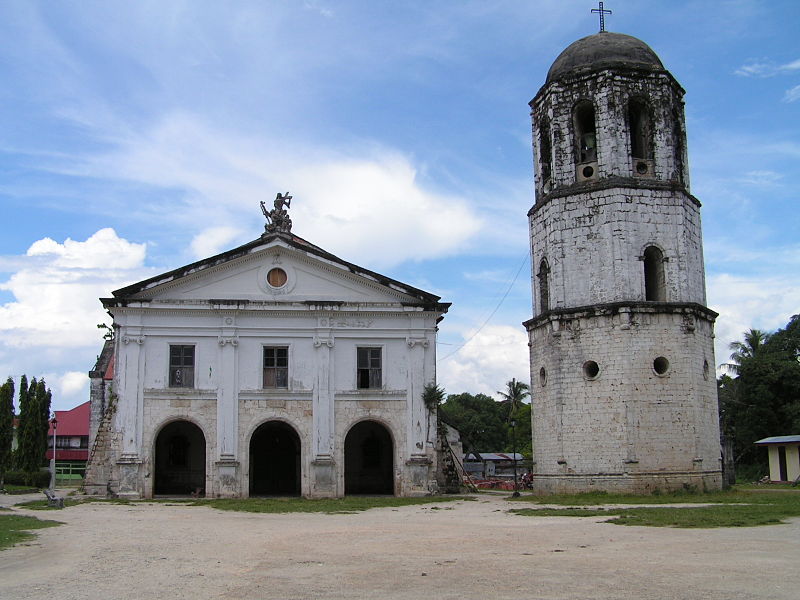
Loay Church
Loay Church is also known as Santissima Trinidad Parish, Its believed foundation year is 1815 and is used to be considered as part of the Loboc Church. Its altar is styled along the lines of Neoclassical architecture.
Sto. Nino Church – Cebu
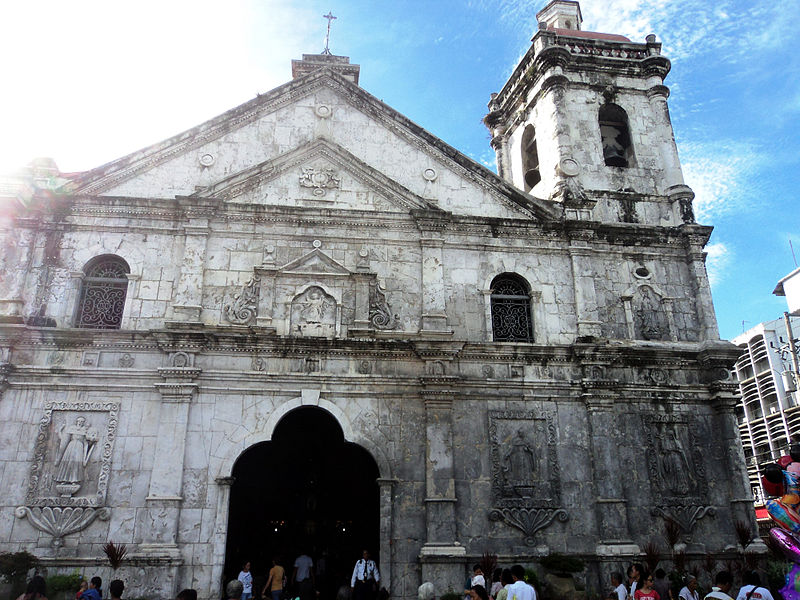
Sto, Nino Church – Cebu
Sto. Nino Church in Cebu goes by the official name of Minor Basilica of the Holy Child. It is the oldest Roman Catholic Church in the Philippines which was built in the 16th century. It houses the image of Sto. Nino de Cebu, the oldest religious image in the country as well.
Image Source: Wikimedia Commons
My Say
As I am writing this, I cannot force myself yet to write about these churches in the past tense. It is still difficult to believe how historical structures like these have suddenly become sites of devastation. In spite of reports to the contrary, I am still hoping that the damage to the other structures are not quite extensive.
I am also hoping that other Philippine treasures in the area have not been destroyed as well. The National Commission for Culture and the Arts (NCCA) is appealing to the public to stay away from damaged churches while helping to safeguard the country’s national treasures. It is my prayer that our nation will once again survive this disaster.
This post will be updated to include other Philippine heritage churches damaged by the earthquake.
My Say 2
Almost a week after the earthquake struck, it is now evident that the task of rebuilding the affected places goes beyond structures. Many lives have been thrown into a turmoil especially with the aftershocks still being felt. May all who have the capacity and the ability to extend help find it in their hearts to act swiftly to ease the pain and suffering of our fellow Filipinos.






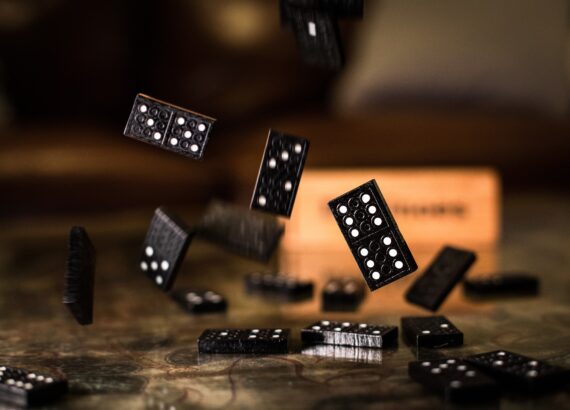
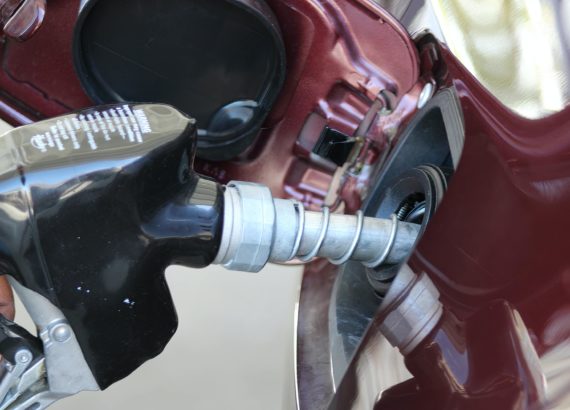

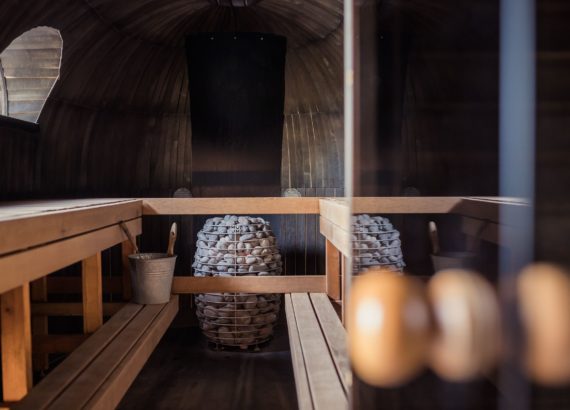
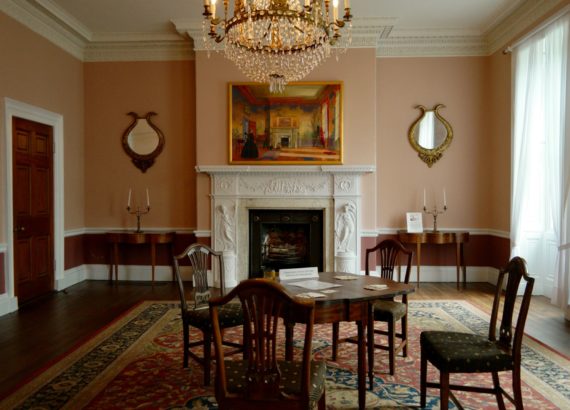

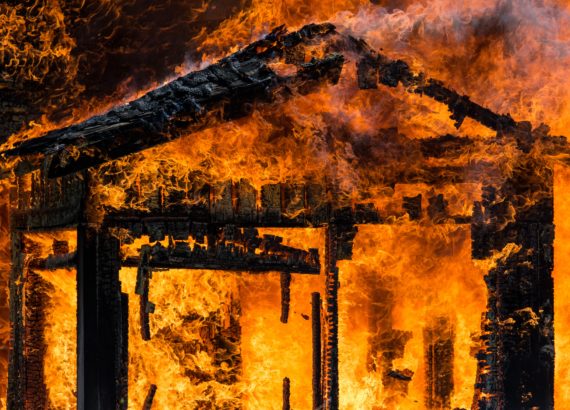
Chubskulit Rose
This is such a such a sad result of a natural calamity. I am praying for the people that are affected.
Yamito Uytingco Calamba
What happened in Central Visayas and some parts of Mindanao is just really devastating. Not only that the earthquake caused us a lot of our treasured and preserved infrastructure but also a lot of people has been affected.